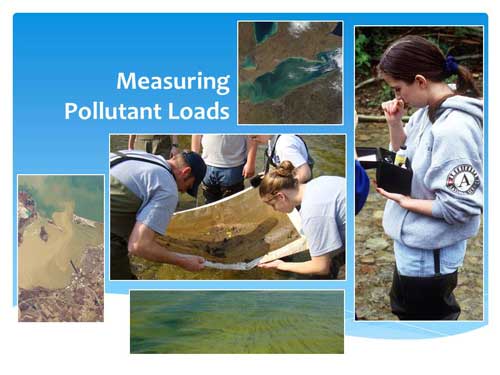Step 3: Finalize Goals and Identify Solutions (cont.)
Determining Load Reductions Needed
After you have set indicators and targets, the next step is to determine load reductions needed to meet those targets. To estimate the load reductions expected from the practices you will implement, you need to understand the cause-and-effect relationship between pollutant loads and the water body response. Establishing this link allows you to evaluate how much of a load reduction from watershed sources is needed to meet water body targets. The options for establishing such links range from qualitative evaluations to detailed receiving water computer modeling. As with your approach for quantifying pollutant loads, selecting the appropriate approach will depend on several factors, including data availability, pollutants, water body type, source types, time frame and spatial scale. Most important, the approach must be compatible with the method used to quantify loads and must be able to predict the necessary load reductions to meet targets.
A number of techniques can be used to estimate load reductions needed such as making qualitative linkages, using a mass balance approach or using receiving water models. Regardless of what approach you use to estimate your allowable loadings or necessary reductions, it’s likely that several scenarios or combinations of source reductions will meet your targets.
As is the case with all elements of establishing targets and watershed assessment, you will need to call on technical members of your agency or outside experts to help identify load reductions needed.
![[logo] US EPA](https://www.epa.gov/epafiles/images/logo_epaseal.gif)






